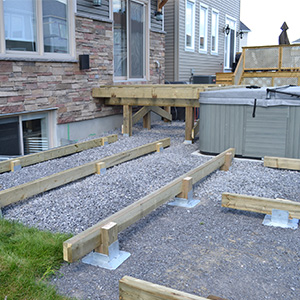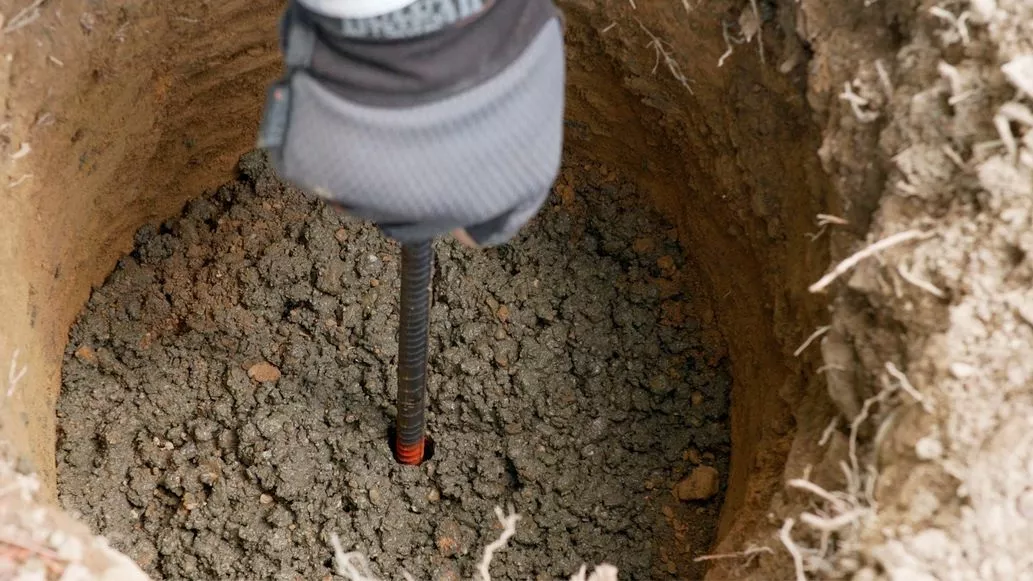Choosing the Right Deck Footings for Stability and Sturdiness
When it pertains to developing a deck, one of one of the most essential choices you will certainly make is picking the appropriate grounds for stability and durability. The long life and security of your deck depend heavily on the kind of footings you select, as they offer the essential assistance and security to stand up to the test of time. With a myriad of choices available, it can be frustrating to determine which grounds are best fit for your certain demands. In this conversation, we will check out the different kinds of deck grounds, think about the important variables to weigh when choosing, and explore the pros and disadvantages of various choices. By the end, you will certainly have a clearer understanding of the options at hand and be much better geared up to make an educated decision for your deck project.
Sorts Of Deck Grounds
There are a number of sorts of deck grounds that can be utilized, each offering unique benefits and considerations. One usual type of footing is the concrete pier ground. These footings contain a cylindrical opening full of concrete, which gives a solid structure for the deck posts. Concrete pier grounds are relatively very easy to install and use excellent stability, making them a preferred selection for many deck jobs.
These footings are mounted by screwing them right into the ground, which produces a protected foundation for the deck. They additionally permit for very easy modification and leveling of the deck if required.
Conversely, some builders choose precast concrete grounds. These grounds are made from durable concrete and can be found in numerous sizes and shapes to accommodate various deck designs. Precast concrete footings are hassle-free to set up and supply a secure base for the deck framework.
Lastly, one more choice is the post-in-anchor ground system. This kind of footing entails driving a steel support into the ground and affixing it to the deck blog post. It uses versatility in terms of placing the deck blog posts and appropriates for decks with light-weight frameworks.
When choosing the ideal kind of deck footing, it is vital to think about variables such as soil problems, deck load, and regional building regulations (Deck Footings). Consulting with an expert service provider or structural designer can aid guarantee the ideal footing is selected for a steady and risk-free deck
Variables to Consider When Selecting Grounds
When selecting the proper grounds for a deck, it is important to thoroughly take into consideration different factors such as dirt conditions, deck lots, and adherence to local building regulations. These elements play a considerable duty in ensuring the security and sturdiness of the deck framework.
The kind of dirt on which the deck will certainly be built figures out the kind of grounds required. On the various other hand, decks constructed on clay or large dirts might need footings that can accommodate the dirt's propensity to broaden and contract.
Another vital variable is the deck tons. The weight of the deck, including the materials made use of and any type of prospective live loads such as furnishings or events, need to be thought about when choosing footings. The grounds need to be created to bear the weight of the deck and distribute it uniformly to stop any kind of architectural problems or failings.
Finally, adherence to local building regulations is extremely important. Building ordinance differ from region to area, and it is necessary to adhere to the certain demands set by the local authorities. Deck Footings. These codes make certain that the deck is developed safely and meets the needed requirements for structural honesty and load-bearing capability
Concrete Footings: Benefits And Drawbacks

When utilized as the structure for a deck,Concrete footings use a number of advantages and disadvantages. On the silver lining, concrete footings give exceptional security and longevity. Concrete is a solid and stiff product that can support heavy loads and hold up against different weather. It additionally has a lengthy lifespan, making it a dependable option for long-term usage.
One more advantage of concrete footings is their flexibility. They can be put into different sizes and shapes to accommodate different deck styles and configurations. Concrete footings can be tailored to fit the certain needs and needs of the deck structure.
However, there are also some downsides to utilizing concrete grounds. This can enhance the overall price of the deck project and may require professional assistance.

Helical Piers Vs. Sonotubes: Which Is Much better?
In taking into consideration the foundation options for a deck, the comparison in between helical piers and sonotubes is essential in determining the premium option. They are turned into the ground utilizing hydraulic machinery, providing a durable and secure foundation for the deck.
The helical plates on the piers create a solid grip with the dirt, avoiding any kind of motion or hop over to these guys shifting of the deck. Sonotubes, on the various other hand, rely exclusively on the concrete filling for security, which might not provide the very same level of toughness and resistance.
In terms of setup, helical piers are relatively much easier and faster to install contrasted to sonotubes. The hydraulic machinery utilized to twist the piers right into the ground makes sure a quick and effective process. Sonotubes, on the other hand, need digging holes and putting concrete, which can be time-consuming and labor-intensive.
Additionally, helical piers are a more flexible alternative. If required, they can be made use of in various soil conditions and can be readjusted or reinforced. Sonotubes, on the other hand, might call for additional assistance, such as rebar, in particular soil conditions or locations with high lots requirements.
Choosing the Right Footings for Your Deck's Measurements
For optimum structural stability, it is important to meticulously select the proper footings that align with the measurements of your deck. The dimensions of your deck, including its size, width, and elevation, play a significant function in identifying the kind and size of footings called for.
When selecting grounds for your deck, it is essential to take into consideration the load-bearing capability of the dirt. The weight of the deck, integrated with the weight of any furnishings address or people on it, puts in a significant force on the footings (Deck Footings). Consequently, it is important to pick footings that can sufficiently sustain this weight without shifting or sinking gradually.
The shapes and size of the grounds need to additionally be taken into consideration. Bigger decks with higher measurements call for bigger grounds to provide sufficient security and support. The shape of the grounds, whether they are square or round, relies on the layout and design of the deck. Additionally, the deepness at which the grounds are installed should be established based upon the frost line Clicking Here in your region to prevent any heaving or changing because of freezing temperatures.
Verdict
In final thought, choosing the right deck grounds is important for ensuring stability and durability. Variables such as the kind of footings, the deck's measurements, and the pros and disadvantages of different alternatives should be considered.
These grounds are composed of a round opening filled up with concrete, which offers a strong structure for the deck articles. Concrete pier footings are relatively very easy to install and supply excellent security, making them a preferred option for lots of deck tasks.
Precast concrete footings are practical to install and provide a stable base for the deck structure.
It offers versatility in terms of placing the deck posts and is suitable for decks with light-weight frameworks.
Concrete grounds offer several advantages and drawbacks when utilized as the structure for a deck.